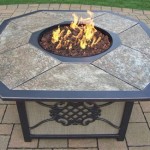Elevating Outdoor Patio Dining: Ideas for Creating an Inviting Space
Outdoor patio dining provides an opportunity to extend living spaces beyond the confines of the home, offering a refreshing environment for meals and gatherings. Designing an effective and inviting outdoor dining area involves careful consideration of several factors, including space, furniture, lighting, and overall ambiance. The following explores diverse patio dining ideas, focusing on key elements to create comfortable and aesthetically pleasing outdoor spaces.
Optimizing Space and Layout for Outdoor Dining
The available space is a crucial determinant in planning an outdoor patio dining area. Smaller patios require a more strategic approach to maximize functionality without overcrowding. Utilizing space-saving furniture, such as bistro sets or folding tables and chairs, can be particularly beneficial in limited areas. Alternatively, larger patios offer greater flexibility in design, allowing for expansive dining tables, multiple seating arrangements, and even supplementary features like outdoor kitchens or bars.
Regardless of the patio size, careful consideration should be given to traffic flow. Ensuring that there is ample space to move around the dining area without obstruction is essential for both comfort and safety. Pathways should be clearly defined, and furniture should be strategically placed to avoid creating bottlenecks. In larger spaces, consider zoning the area to delineate different functional areas, such as a dining zone, a lounging zone, and a cooking zone.
The layout should also take into account the surrounding environment. Consider the proximity to the house, the presence of landscaping features, and the views from the patio. Positioning the dining area to take advantage of natural shade or scenic vistas can significantly enhance the dining experience. If the patio is exposed to direct sunlight, implementing shading solutions, such as umbrellas, pergolas, or awnings, is necessary to maintain comfortable temperatures.
Vertical space can also be effectively utilized, especially in smaller patio designs. Wall-mounted planters, trellises with climbing plants, or vertical gardens can add visual interest and create a sense of enclosure without encroaching on the limited horizontal space. Incorporating these elements can transform a cramped patio into a lush and inviting outdoor oasis.
Selecting Durable and Stylish Outdoor Furniture
The choice of furniture plays a pivotal role in the functionality and aesthetics of an outdoor patio dining area. Durability is a primary consideration, as outdoor furniture is exposed to the elements and must withstand varying weather conditions. Materials such as teak, aluminum, wrought iron, and synthetic resin wicker are known for their weather resistance and longevity.
Teak is a popular choice for its natural beauty, durability, and resistance to rot and decay. Its rich color and smooth texture add warmth and sophistication to any outdoor space. Aluminum is lightweight, rust-resistant, and easy to maintain, making it a practical option for contemporary patio designs. Wrought iron is a classic choice that offers strength and stability, while synthetic resin wicker provides the look of natural wicker with enhanced weather resistance.
In addition to material selection, comfort is paramount. Choose chairs and tables that are ergonomically designed for comfortable seating and dining. Consider adding cushions and pillows made from weather-resistant fabrics to enhance comfort and add a pop of color and style. Outdoor fabrics such as Sunbrella are designed to withstand fading, mildew, and water damage, making them ideal for outdoor use.
The style of the furniture should complement the overall aesthetic of the patio and the house. Whether opting for a modern, rustic, or traditional look, ensure that the furniture pieces are cohesive and create a harmonious atmosphere. Mixing and matching different styles can create an eclectic look, but it requires careful consideration to avoid clashing elements. Consider the scale of the furniture in relation to the size of the patio. Oversized furniture can overwhelm a small space, while undersized furniture can look out of place in a larger area.
Furthermore, consider the functionality of the furniture. If space is limited, folding or stackable chairs can be easily stored when not in use. Extendable dining tables provide flexibility for accommodating larger groups of guests. Furniture with built-in storage can help to keep the patio clutter-free and organized.
Creating Ambiance Through Lighting, Décor, and Landscaping
Lighting is an indispensable element in creating the right ambiance for outdoor patio dining. Strategic lighting can transform a patio from a mundane space into a magical and inviting setting. A combination of ambient, task, and accent lighting is often the most effective approach.
Ambient lighting provides overall illumination to the patio, creating a soft and welcoming atmosphere. String lights, lanterns, and pendant lights are popular choices for ambient lighting. Task lighting focuses on specific areas, such as the dining table or outdoor kitchen, providing functional illumination for dining and food preparation. Spotlights, recessed lighting, and adjustable lamps are suitable for task lighting.
Accent lighting highlights specific features of the patio, such as plants, sculptures, or architectural details. Uplighting, spotlights, and path lights can be used to create dramatic effects and add visual interest. Consider using dimmers to adjust the intensity of the lighting and create different moods. Solar-powered lights are an energy-efficient and eco-friendly option for outdoor lighting.
Décor elements play a crucial role in personalizing the patio and creating a unique atmosphere. Outdoor rugs can define the dining area and add warmth and texture. Throw pillows and cushions can enhance comfort and add pops of color. Table settings, including tablecloths, placemats, and centerpieces, can elevate the dining experience.
Consider incorporating natural elements into the décor. Planters with flowers, herbs, or greenery can add life and color to the patio. Water features, such as fountains or small ponds, can create a soothing and relaxing atmosphere. Wind chimes can add a gentle and melodic sound to the patio. Personal touches, such as artwork, sculptures, or family heirlooms, can make the patio feel more personal and inviting.
Landscaping is an integral part of creating an inviting outdoor dining space. Incorporating plants, trees, and shrubs can provide shade, privacy, and visual interest. Consider planting fragrant flowers or herbs near the dining area to enhance the sensory experience. Vertical gardens can add greenery to small patios and create a sense of enclosure. Trees can provide natural shade and create a cooling effect. Choose plants that are well-suited to the local climate and require minimal maintenance.
Privacy is an important consideration, especially in urban settings. Fences, hedges, or screens can provide privacy from neighbors and create a more intimate dining environment. Climbing plants on trellises can also create a natural privacy screen.
Maintaining the cleanliness and organization of the patio is essential for creating a welcoming space. Regularly sweep or wash the patio to remove dirt and debris. Clean the furniture and cushions to prevent mildew and stains. Store outdoor accessories, such as cushions and umbrellas, in a dry place when not in use. A well-maintained patio will provide a comfortable and enjoyable dining experience for years to come.
Beyond the elements discussed, incorporating features like outdoor heaters or fire pits can extend the usability of the patio into cooler months. These additions provide warmth and create a cozy ambiance. Similarly, incorporating insect repellent systems can mitigate the nuisance of insects, maximizing comfort during outdoor dining experiences. These considerations should be tailored to the local climate and specific needs of the homeowner.
Ultimately, the most successful patio dining areas are those that reflect the individual tastes and lifestyles of their owners. Experimenting with different design elements and incorporating personal touches can create a unique and inviting space that is perfect for enjoying meals and gatherings with family and friends. By carefully considering space, furniture, lighting, décor, and landscaping, it's possible to transform any patio into an outdoor dining oasis.

50 Outdoor Dining Room Ideas
:strip_icc()/100092481-ca052c16890440868979ff49832f94b9.jpg?strip=all)
16 Patio Furniture Ideas To Make Your Backyard A Destination

The Best Decorating Ideas For Your Outdoor Dining Space

12 Outdoor Dining Space Ideas Town Country Living

10 Ideas For Styling Your Patio Outdoor Dining This Fall

14 Outdoor Dining Space Ideas For The Perfect Summer Staycation

The Best Small Patio Ideas To Eoy This Summer

Ideas For Outdoor Dining Rooms

10 Ideas For Styling Your Patio Outdoor Dining This Fall

Outdoor Dining Ideas For Fancy Al Fresco Feasts








